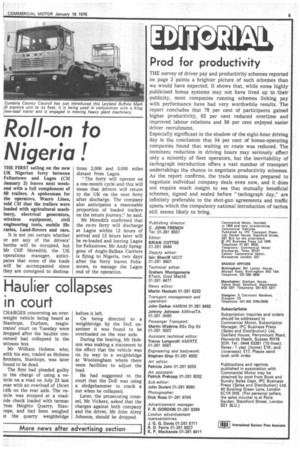Prod for productivity
Page 7

If you've noticed an error in this article please click here to report it so we can fix it.
THE survey of driver pay and productivity schemes reported on page 2 paints a brighter picture of such schemes than we would have expected. It shows that, while some highly publicised bonus systems may not have lived up to their publicity, most companies running schemes linking pay with performance have had very worthwhile results, The report concludes that 78 per cent of participants gained higher productivity, 62 per cent reduced overtime and improved labour relations and 56 per cent enjoyed easier driver recruitment.
Especially significant in the shadow of the eight-hour driving day is the conclusion that 54 per cent of bonus-operating companies found that waiting en route was reduced. The imminent reduction in driving hours may seriously affect only a minority of fleet operators, but the inevitability of tachograph introduction offers a vast number of transport undertakings the chance to negotiate productivity schemes. As' the report confirms, the trade unions are prepared to negotiate individual company deals even now, and it does not require much insight to see that mutually beneficial schemes, signed and sealed before "tachograph day," are infinitely preferable to the shot-gun agreements and traffic upsets which the compulsory national introduction of tachos still seems likely to bring.












































































































